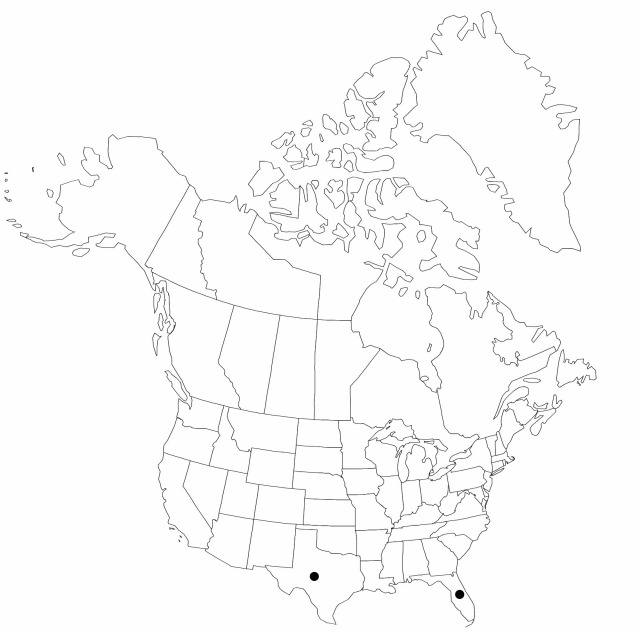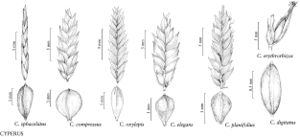Difference between revisions of "Cyperus digitatus"
Fl. Ind. 1: 209. 1820.
FNA>Volume Importer |
imported>Volume Importer |
||
| Line 6: | Line 6: | ||
|place=1: 209. 1820 | |place=1: 209. 1820 | ||
|year=1820 | |year=1820 | ||
| + | }} | ||
| + | |special_status={{Treatment/ID/Special_status | ||
| + | |code=F | ||
| + | |label=Illustrated | ||
}} | }} | ||
|basionyms= | |basionyms= | ||
| Line 44: | Line 48: | ||
|publication title=Fl. Ind. | |publication title=Fl. Ind. | ||
|publication year=1820 | |publication year=1820 | ||
| − | |special status= | + | |special status=Illustrated |
| − | |source xml=https:// | + | |source xml=https://bibilujan@bitbucket.org/aafc-mbb/fna-data-curation.git/src/bb6b7e3a7de7d3b7888a1ad48c7fd8f5c722d8d6/coarse_grained_fna_xml/V23/V23_286.xml |
|genus=Cyperus | |genus=Cyperus | ||
|subgenus=Cyperus subg. Cyperus | |subgenus=Cyperus subg. Cyperus | ||
Revision as of 21:32, 27 May 2020
Herbs, perennial, rhizomatous, coarse. Culms trigonous, 50–150 cm × 2–15 mm, glabrous (rarely sparsely scabridulous on angles proximal to bracts). Leaves inversely W-shaped, 40–100 cm × 5–15 mm. Inflorescences: spikes 1–4, cylindric, (2.5–)3.5–5 × 1.2–1.5 cm; rays 8–10, (1–)15–35 cm; 2d order rays 1–3 cm; bracts 8–12, ascending at 45–60°, (5–)20–80 cm × 3–15 mm; 2d order bracts 3–7 cm × 2–4 mm; rachilla persistent, wings 0.3 mm wide, at achene maturation adaxial edge of wing detaching from rachilla, base remaining firmly attached. Spikelets 35–65, slightly compressed, linear, ± quadrangular, 5–8 × 0.8–1.1 mm; floral scales deciduous, 12–16, appressed, marginally clear, laterally reddish along midrib, medially green, laterally 1–2-ribbed, medially strongly 5-ribbed, ovate, 1.6–1.8 × 1.1–1.3 mm, apex mucronulate. Flowers: anthers 0.4–0.5 mm, connective blunt, at most 0.1 mm; styles 0.8–1 mm; stigmas 0.4 mm. Achenes brown or whitish, sessile, ellipsoid, slightly wider at base, 0.9 × 0.4 mm, surfaces finely puncticulate.
Phenology: Fruiting summer.
Habitat: Wet pastures, stream banks
Elevation: 0–100 m
Distribution

Fla., Tex., Mexico, Central America, South America, Asia, Africa.
Discussion
Selected References
None.
